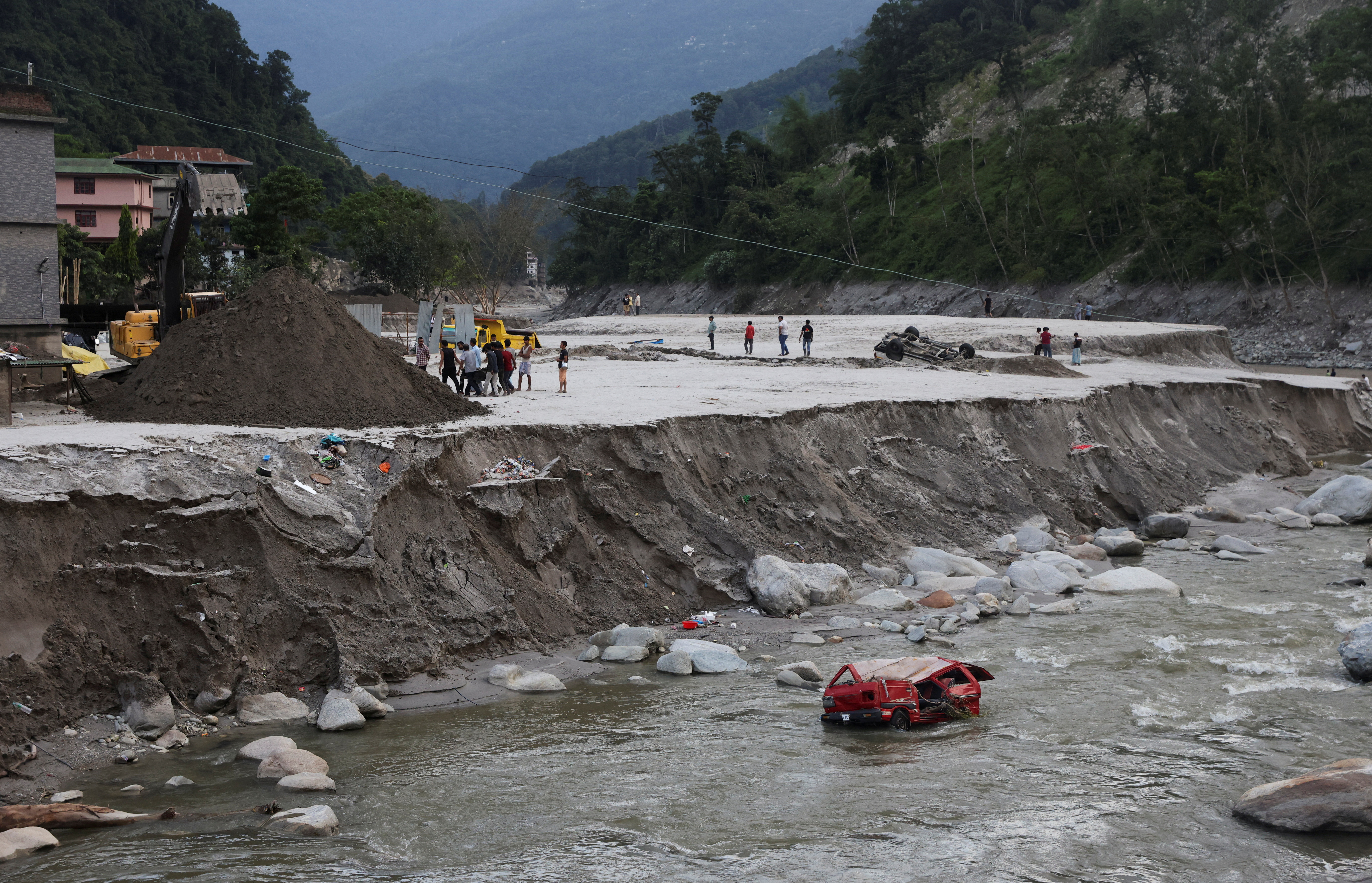RANGPO, India, Oct 9 (Reuters) – The death toll from flash floods unleashed by a glacial lake bursting its banks in India’s Himalayas climbed to 74 on Monday with 101 people still missing days after the calamity struck, according to provincial officials.
Following days of torrential rain in the northeastern state of Sikkim, torrents of water swept down narrow river valleys from Lohnak Lake, damaging a dam and wreaking destruction in villages and Rangpo town, about 50 km (30 miles) south of state capital Gangtok.
Sikkim’s chief secretary Vijay Bhushan Pathak, the most senior bureaucrat, told Reuters that rescuers had found 25 bodies in the state and bodies of eight army men washed away were found in the neighbouring downstream state of West Bengal.
He said 101 people were still missing in the latest of a series of natural disasters caused by extreme weather events in the Himalayas. Fourteen army personnel were among the missing, a defence ministry statement said.
The search for survivors was hampered by damaged roads, poor communications and bad weather, and residents were struggling to clear sludge and debris in the wake of one of the worst disasters in the remote region in more than 50 years.
Parveen Shama, the top district official of Jalpaiguri in West Bengal, said 41 bodies were found in the district.
Sikkim, a Buddhist state of 650,000 people wedged in the mountains between Nepal, Bhutan and China, received 101 mm (four inches) of rain in the first five days of October, more than double normal levels.
A view of damaged vehicles after flash floods, caused by a lake burst in Singtam, Sikkim, India, October 8, 2023. REUTERS/Francis Mascarenhas Acquire Licensing Rights
In October 1968, an estimated 1,000 people in Sikkim perished in floods.
Mukesh Kumar, a 43-year-old migrant worker in Rangpo, described how he and his neighbours had barely 10 minutes to escape before the flash flood hit.
“Had we not left for another two minutes, we might have drowned,” said Kumar, staring at the sludge and debris covering his lodgings.
Residents told Reuters that many people whose dwellings were on the ground floor could not have survived.
Baiju Sharma, 45, who ran a furniture business, surveyed the aftermath of the disaster.
“Where you are standing is 15 feet (4.5 metres) higher than earlier. You are standing on his house,” Sharma said, pointing towards his neighbour.
Government officials said about 2,000 tourists stuck in cut off areas of northern Sikkim were reported to be safe, and state authorities and the army had provided them with food and communication facilities to contact their families.
Additional reporting by Subrata Nag Choudhury in Kolkata; writing by Mayank Bhardwaj and YP Rajesh; Editing by Simon Cameron-Moore
Our Standards: The Thomson Reuters Trust Principles.








